People
artnet Asks: Saad Qureshi Talks Miracles, Mindscapes, and Mrs. Robinson
His current exhibition, “When the Moon Split,” is on view at Aicon Gallery through November 4.
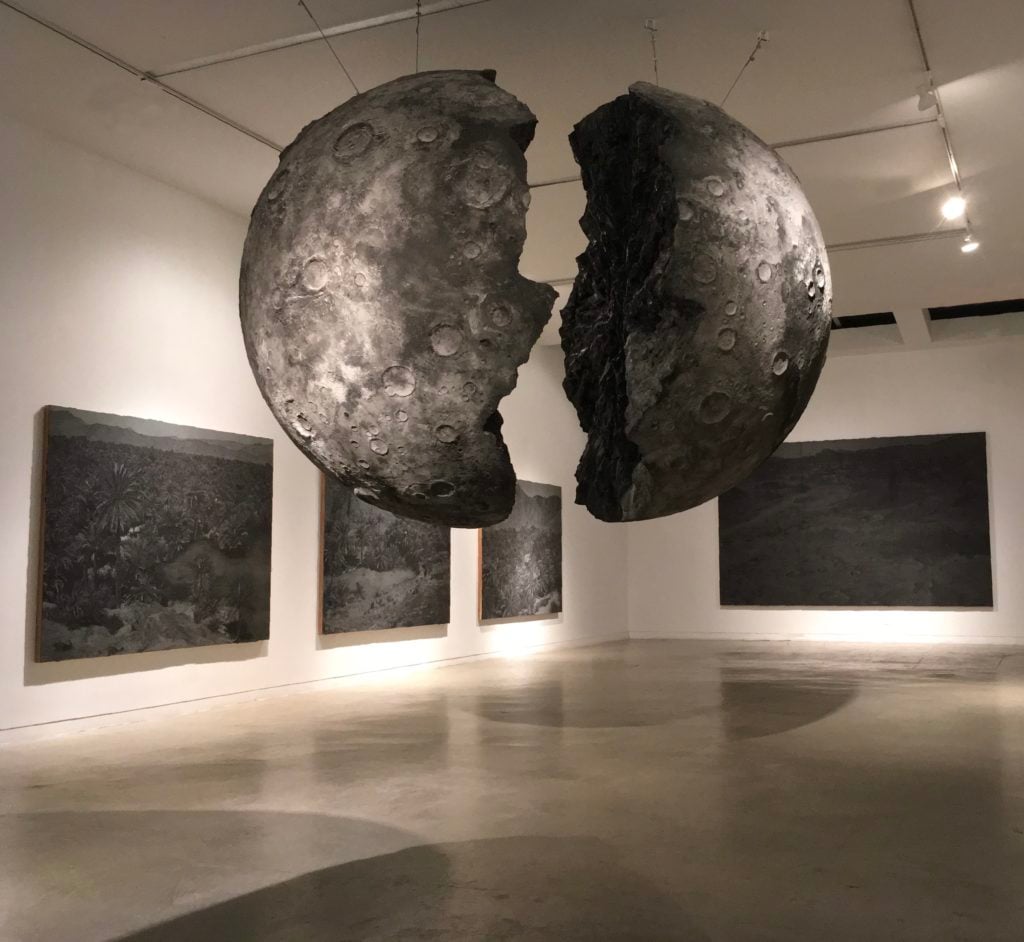
His current exhibition, “When the Moon Split,” is on view at Aicon Gallery through November 4.

Artnet Galleries Team

From the quiet, impressionable surface of the moon to bustling London landmarks, Saad Qureshi’s sculpture, drawing, and installation art explores mental and physical landscapes. The artist’s work poetically probes cultural belonging, interconnectedness, and separation through scale, material, and metaphor. Qureshi’s current exhibition at Aicon Gallery, “When the Moon Split,” is centered on the artist’s visual re-articulation of a miracle, accompanied by his experiments with a new technique. He encourages the viewer to enter a space both real and otherworldly in the show, which is on view through November 4.
Qureshi was kind enough to sit down with artnet News to discuss his support system, site-specific commissions, the pros of public spaces, and what to expect next.
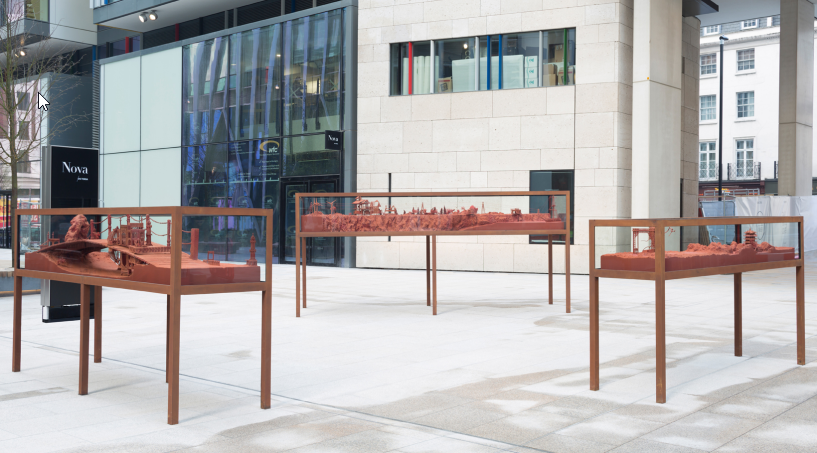
Saad Qureshi, Places for Nova (2017). Courtesy of Aicon Gallery.
What experiences led you to become an artist?
I never consciously sat down and decided I was going to be an artist: it was always “inherent.” When I was at school, I knew I wanted to do something creative, but my parents had no notion that art could be a career, so as a compromise, we started looking at university graphic design courses.
When my art teacher, Mrs. Robinson, heard about this, she really stepped in and did something that changed the course of my life: she requested a meeting with my parents. After they expressed their reservations about the uncertainties involved in studying fine art, she just said this: “Let’s give him a chance, and we will hear his name in the coming years.” And now my parents are my greatest supporters, thanks to her!
Tell us about your current show at Aicon Gallery, “When the Moon Split.”
My sculpture, When the Moon Split, is inspired by the famous story of a miracle performed by the Prophet Mohammed when he was challenged to justify his faith. I wanted to dramatize the sense of wonder that the inhabitants of Mecca must have felt when they saw the moon splitting in half. I have recreated the spectacle of the split moon, but brought it into the enclosed space of the gallery, which in itself is an improbable vision.
Surrounding the moon on the walls are six monumental drawings, weaving elements of real landscapes from around the world with imagined places. This develops the fascination elsewhere in my work, with evolving a series of parallel places which are neither altogether truly real, nor truly not, since they are created in the mind and can exist there. I call them “mindscapes.”
I’ve also made eight smaller works, which are part of my recent experiments in using the soldering iron as a drawing tool. I wanted to recreate on paper my impression of the surface of the moon, sculpted by millennia of meteors.
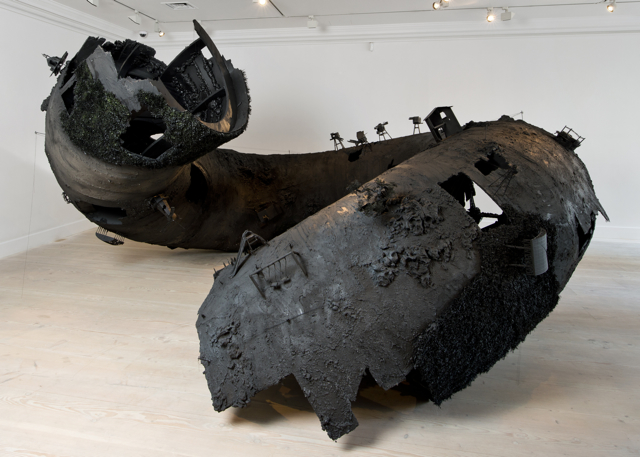
How about your public commission, Places for Nova, in London? How did that come about?
Places for Nova is an installation I conceived specifically for a new district of central London developed by LandSec. It sits between Victoria Station, one of the major transport hubs, but also behind Buckingham Palace. As part of the development of the work, I wanted to bring in the experiences of the cross-section of people who live, work, and travel through the area, so I invited them to share a memory of a place that was significant to them, but that they no longer had access to.
I gathered these dozens of places together and reimagined them into a series of “mindscapes” with a slightly other-worldly quality, as they are unified by a covering of red brick dust. They’re housed in six vitrines located throughout the public realm at the Nova development. Each one is an invitation to viewers to think about the portability of landscapes, and how we carry places in our mind wherever we go. The work is in place until March 2018, so go and see it for yourself if you’re in the area!
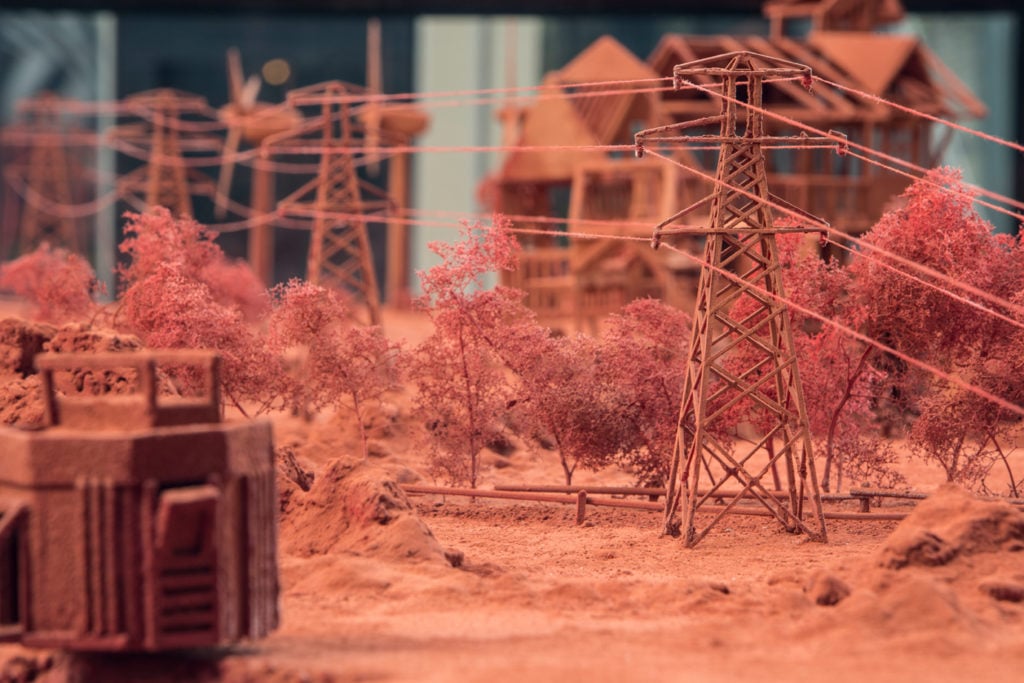
What are the pros and cons of exhibiting your work in public spaces?
When you show your work exclusively in a gallery or museum context, you limit your audience to those already somehow within the art world. The exciting thing about putting contemporary art in a public place is that it’s there for everyone to discover and experience. From a purely creative point of view, it forces me out of the studio and to focus my mind on a specific place for a particular period of time. It may be a place I don’t know well, or that I’d passed by without thinking about, so it prompts a different kind of imaginative engagement, often with unexpected results. This keeps the process of making and thinking about art surprising for me as well.
Making work for the public realm also involves an element of competition with context: the work needs to claim a space for itself somewhere which was not conceived exclusively for art. It has to hold its own against the canvas of buildings, traffic, the chaos of everyday life. I wouldn’t call this a con, so much as a stimulating challenge.
When did you realize that “you’ve made it” in the art world? Do you think an artist ever feels this way?
When I first started working as an artist, I may have had some notion of what this might mean—having my first major solo exhibition, or winning a prize or an important commission—but with time, I’ve come to the conclusion that this really isn’t a particularly relevant question. The important thing is to keep making your work, and being more ambitious for each time. The rest takes care of itself.
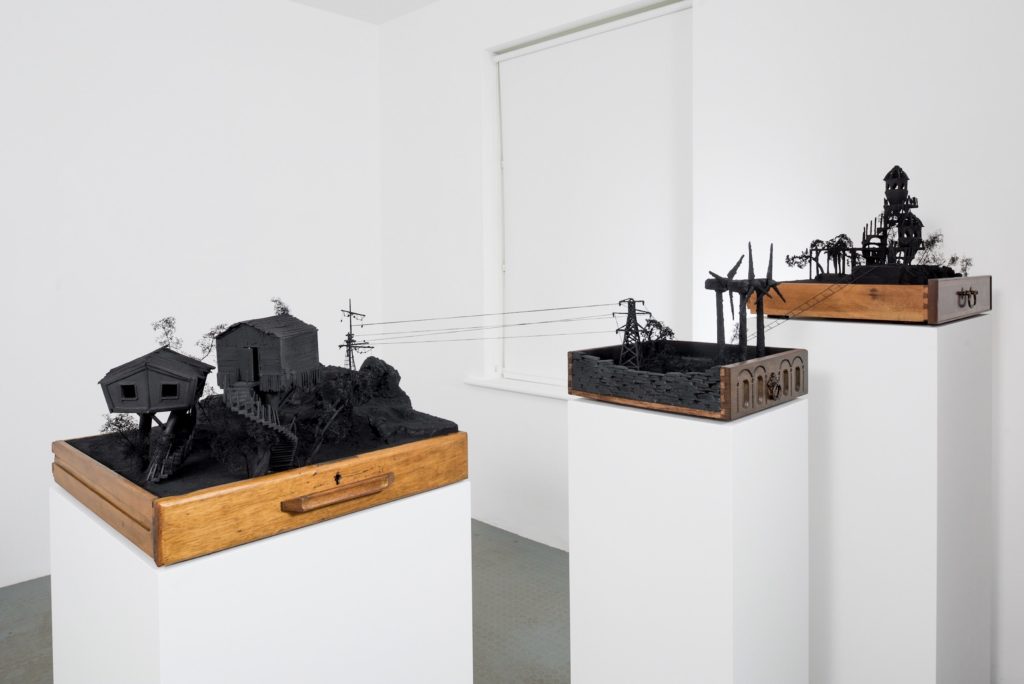
What’s next for you? Any upcoming projects or exhibitions?
I’m really excited to have been invited by Oxford Brookes University, where I did my first degree in fine art, to create a permanent commission for the Central Courtyard at their newly redeveloped campus. This courtyard is where some of the key events of academic life will take place, like matriculation and graduation photographs. I wanted to make a piece that reflects the way that university is one of those precious perches that life affords us, from which point our minds can metaphorically “take flight.”
So, I am making a work that evokes this central courtyard as a place of Assembly (the title of the work), where a cast of birdlike creatures have temporarily come to rest. I’ve spent the past few months speaking to students and staff at Brookes to find out what brought them there, what they hope to gain and contribute while they’re there, and where they hope to fly on to. Out of this process, I’ve created five bronze birds that embody these characteristics to form an assembly of species that provide a unique snapshot of Oxford Brookes in 2017. The work is in production at the moment, and will be unveiled later this year.
There are a couple of other exciting projects for 2018 which haven’t been announced yet, but which I’m also very much looking forward to.
If you weren’t an artist, what other profession would you have gone into?
I don’t remember ever feeling that I had an option other than to be an artist. It’s a direction that was established in my mind so early on that I didn’t really consider other alternatives.
However, textiles and fashion have been part of my family for generations, and clothes are something that I love and really enjoy, so perhaps I could have gone that way, had Mrs. Robinson not stepped in at that crucial moment!
The artnet Gallery Network is a community of the world’s leading galleries offering artworks by today’s most collected artists. Learn more about becoming a member here, or explore our member galleries here.